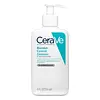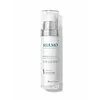What's inside
What's inside
 Key Ingredients
Key Ingredients

 Benefits
Benefits

 Concerns
Concerns

 Ingredients Side-by-side
Ingredients Side-by-side

Salicylic Acid 2%
MaskingWater
Skin ConditioningSodium Lauroyl Sarcosinate
CleansingCocamidopropyl Hydroxysultaine
CleansingGlycerin
HumectantNiacinamide
SmoothingGluconolactone
Skin ConditioningSodium Methyl Cocoyl Taurate
CleansingPEG-150 Pentaerythrityl Tetrastearate
EmulsifyingCeramide NP
Skin ConditioningCeramide AP
Skin ConditioningCeramide EOP
Skin ConditioningCarbomer
Emulsion StabilisingCalcium Gluconate
HumectantTriethyl Citrate
MaskingSodium Benzoate
MaskingSodium Hydroxide
BufferingSodium Lauroyl Lactylate
EmulsifyingCholesterol
EmollientTetrasodium EDTA
Caprylyl Glycol
EmollientHydrolyzed Hyaluronic Acid
HumectantTrisodium Ethylenediamine Disuccinate
Xanthan Gum
EmulsifyingHectorite
AbsorbentPhytosphingosine
Skin ConditioningBenzoic Acid
MaskingSalicylic Acid 2%, Water, Sodium Lauroyl Sarcosinate, Cocamidopropyl Hydroxysultaine, Glycerin, Niacinamide, Gluconolactone, Sodium Methyl Cocoyl Taurate, PEG-150 Pentaerythrityl Tetrastearate, Ceramide NP, Ceramide AP, Ceramide EOP, Carbomer, Calcium Gluconate, Triethyl Citrate, Sodium Benzoate, Sodium Hydroxide, Sodium Lauroyl Lactylate, Cholesterol, Tetrasodium EDTA, Caprylyl Glycol, Hydrolyzed Hyaluronic Acid, Trisodium Ethylenediamine Disuccinate, Xanthan Gum, Hectorite, Phytosphingosine, Benzoic Acid
Water
Skin ConditioningGlycerin
HumectantCaprylic/Capric Triglyceride
MaskingButyrospermum Parkii Butter
Skin ConditioningPersea Gratissima Oil
Skin ConditioningCetyl Alcohol
EmollientSimmondsia Chinensis Seed Oil
EmollientPolyglyceryl-6 Distearate
EmulsifyingAluminum Starch Octenylsuccinate
AbsorbentTocopheryl Acetate
AntioxidantPropanediol
SolventPolyglycerin-3
HumectantOlus Oil
EmollientHydrogenated Vegetable Oil
EmollientCandelilla Cera
EmollientTocopherol
AntioxidantAscorbyl Palmitate
AntioxidantTrehalose
HumectantAllantoin
Skin ConditioningSodium Hyaluronate
HumectantSwertia Chirata Extract
HumectantMaltodextrin
AbsorbentEperua Falcata Bark Extract
Skin ProtectingHordeum Vulgare Seed Extract
Skin ConditioningXanthan Gum
EmulsifyingCaprylyl Glycol
EmollientGlycine Soja Oil
EmollientChitosan
Acrylates/C10-30 Alkyl Acrylate Crosspolymer
Emulsion StabilisingGlycolic Acid
BufferingPolysorbate 20
EmulsifyingSorbitan Oleate
EmulsifyingCitric Acid
BufferingIsopropyl Palmitate
EmollientLecithin
EmollientTropolone
Skin Conditioning1,2-Hexanediol
Skin ConditioningWater, Glycerin, Caprylic/Capric Triglyceride, Butyrospermum Parkii Butter, Persea Gratissima Oil, Cetyl Alcohol, Simmondsia Chinensis Seed Oil, Polyglyceryl-6 Distearate, Aluminum Starch Octenylsuccinate, Tocopheryl Acetate, Propanediol, Polyglycerin-3, Olus Oil, Hydrogenated Vegetable Oil, Candelilla Cera, Tocopherol, Ascorbyl Palmitate, Trehalose, Allantoin, Sodium Hyaluronate, Swertia Chirata Extract, Maltodextrin, Eperua Falcata Bark Extract, Hordeum Vulgare Seed Extract, Xanthan Gum, Caprylyl Glycol, Glycine Soja Oil, Chitosan, Acrylates/C10-30 Alkyl Acrylate Crosspolymer, Glycolic Acid, Polysorbate 20, Sorbitan Oleate, Citric Acid, Isopropyl Palmitate, Lecithin, Tropolone, 1,2-Hexanediol
 Reviews
Reviews

Ingredients Explained
These ingredients are found in both products.
Ingredients higher up in an ingredient list are typically present in a larger amount.
Caprylyl Glycol is a humectant and emollient, meaning it attracts and preserves moisture.
It is a common ingredient in many products, especially those designed to hydrate skin. The primary benefits are retaining moisture, skin softening, and promoting a healthy skin barrier.
Though Caprylyl Glycol is an alcohol derived from fatty acids, it is not the kind that can dry out skin.
This ingredient is also used as a preservative to extend the life of products. It has slight antimicrobial properties.
Learn more about Caprylyl GlycolGlycerin is already naturally found in your skin. It helps moisturize and protect your skin.
A study from 2016 found glycerin to be more effective as a humectant than AHAs and hyaluronic acid.
As a humectant, it helps the skin stay hydrated by pulling moisture to your skin. The low molecular weight of glycerin allows it to pull moisture into the deeper layers of your skin.
Hydrated skin improves your skin barrier; Your skin barrier helps protect against irritants and bacteria.
Glycerin has also been found to have antimicrobial and antiviral properties. Due to these properties, glycerin is often used in wound and burn treatments.
In cosmetics, glycerin is usually derived from plants such as soybean or palm. However, it can also be sourced from animals, such as tallow or animal fat.
This ingredient is organic, colorless, odorless, and non-toxic.
Glycerin is the name for this ingredient in American English. British English uses Glycerol/Glycerine.
Learn more about GlycerinWater. It's the most common cosmetic ingredient of all. You'll usually see it at the top of ingredient lists, meaning that it makes up the largest part of the product.
So why is it so popular? Water most often acts as a solvent - this means that it helps dissolve other ingredients into the formulation.
You'll also recognize water as that liquid we all need to stay alive. If you see this, drink a glass of water. Stay hydrated!
Learn more about WaterXanthan gum is used as a stabilizer and thickener within cosmetic products. It helps give products a sticky, thick feeling - preventing them from being too runny.
On the technical side of things, xanthan gum is a polysaccharide - a combination consisting of multiple sugar molecules bonded together.
Xanthan gum is a pretty common and great ingredient. It is a natural, non-toxic, non-irritating ingredient that is also commonly used in food products.
Learn more about Xanthan Gum